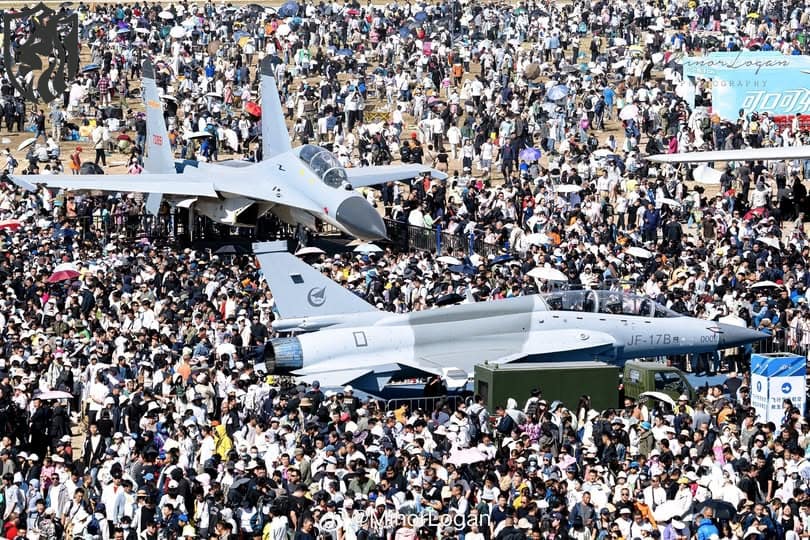
JF-17B Light Fighter 2025 — PLAAF Trainer with Combat Edge
Why the JF-17B light fighter matters in 2025
China showcased the JF-17B light fighter at the Changchun Air Show, and industry chatter suggests a push to market it to the PLAAF. The JF-17 family is in serial production, yet Beijing has not adopted it for frontline use. Even so, the JF-17B light fighter offers a compelling trainer proposition: low lifetime cost, simple maintenance, and credible secondary combat utility. Media at the show highlighted the type’s presence and crowd interest.
Trainer role: what the JF-17B light fighter brings
Unlike subsonic or lightly armed trainers, the JF-17B light fighter can refuel in flight. That capability supports long-range training sorties and familiarises pilots with tanker procedures as the PLAAF’s YY-20/YY-20A fleet grows. Recent analyses note the tanker force expanded further in 2024, with new air-to-air refuelling demonstrations in 2025. The JF-17B light fighter aligns neatly with that training need.

Sensors and weapons: beyond a typical trainer
In its latest configuration, the JF-17B light fighter can field an AESA radar and carry PL-10 (WVR) and PL-15 (BVR) missiles—giving a trainer a credible bite. Open sources and imagery confirm PL-15 carriage on JF-17 Block III, with estimates placing domestic PL-15 range around 200–300 km and the export PL-15E near ~145 km. The JF-17B light fighter would redefine air-to-air training realism for a platform of this weight class.
Engine commonality: a potential but unproven bonus
Some commentary has speculated that the JF-17B light fighter could adopt the WS-21 engine, implying partial commonality with newer Chinese types. However, authoritative sources still associate the JF-17 series with RD-93/WS-13 derivatives, and any WS-21 linkage remains unverified in public documentation. Treat this conclusion as tentative until official confirmation emerges.
How it compares to current PLAAF trainers
Today’s PLAAF advanced training pipeline revolves around the JL-9 and JL-10. The JL-9 is simpler and cheaper; the JL-10 (L-15) is more modern and supersonic, serving as a LIFT platform. Even so, both have more limited combat systems than a fully kitted JF-17B light fighter. Therefore, adopting a small batch of JF-17Bs for training could raise sortie realism and provide a ready “mobilisation” capability in crisis.

JL-9 vs JL-10 at a glance
- The JL-9 is a transonic aircraft with a legacy lineage and modest sensors, designed to be economical.
- JL-10 (L-15): Supersonic LIFT, more advanced avionics; improves conversion time to modern fighters.
Cost and sustainment: The unanswered questions
The JF-17B light fighter is marketed as affordable to buy and operate, which appeals to training commands under budget pressure. Nevertheless, the key unknowns for the PLAAF are unit price, spares posture, engine support, and local sustainment integration compared with existing JL-9/JL-10 fleets. Until these numbers become transparent, the procurement of the JF-17B light fighter is likely to remain limited and experimental.
Strategic upside: training realism with deterrent value
Adopting the JF-17B light fighter as an advanced trainer would improve refuelling proficiency, BVR/WVR tactics, and radar/missile employment training. Moreover, trainer units could contribute credible air defense to a surge, given the aircraft’s AESA and PL-10/PL-15 options. That dual-use value strengthens readiness without procuring a full-fat frontline type.






